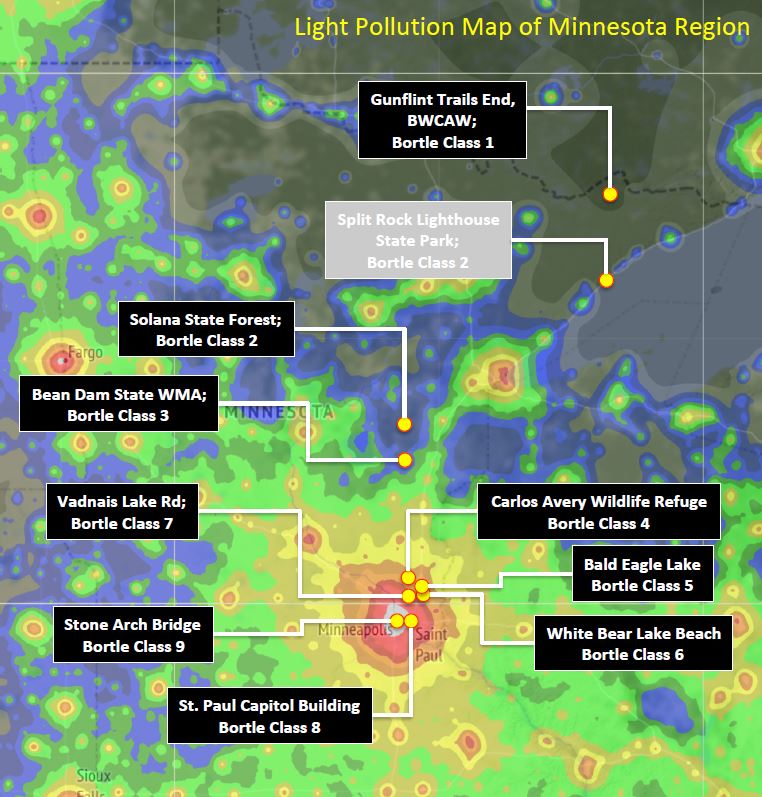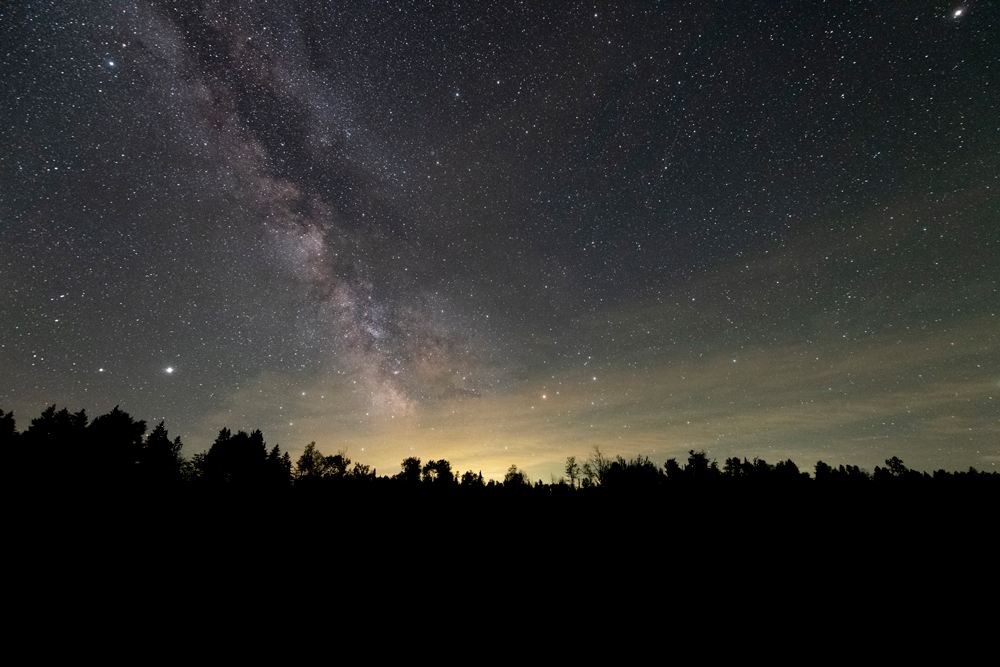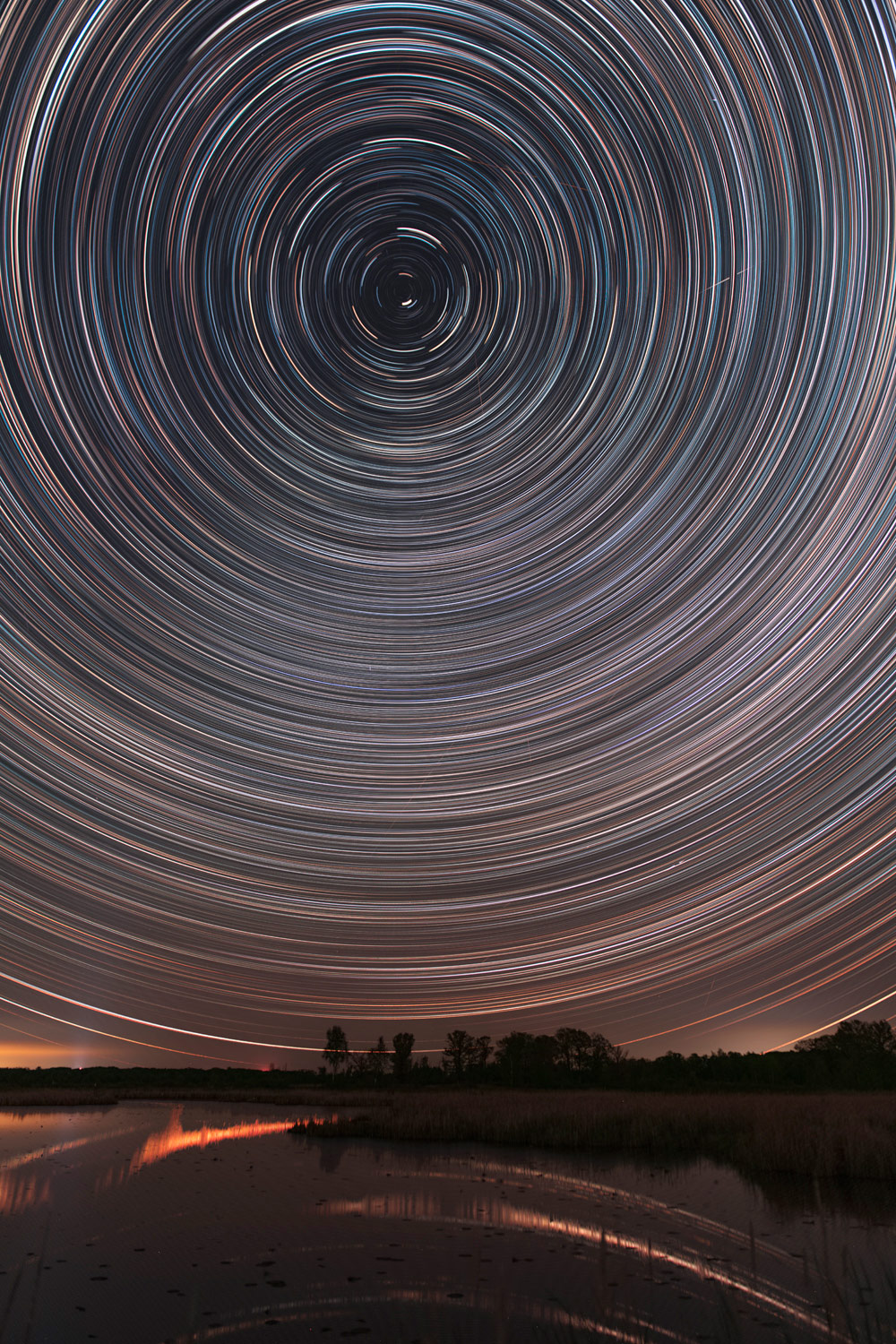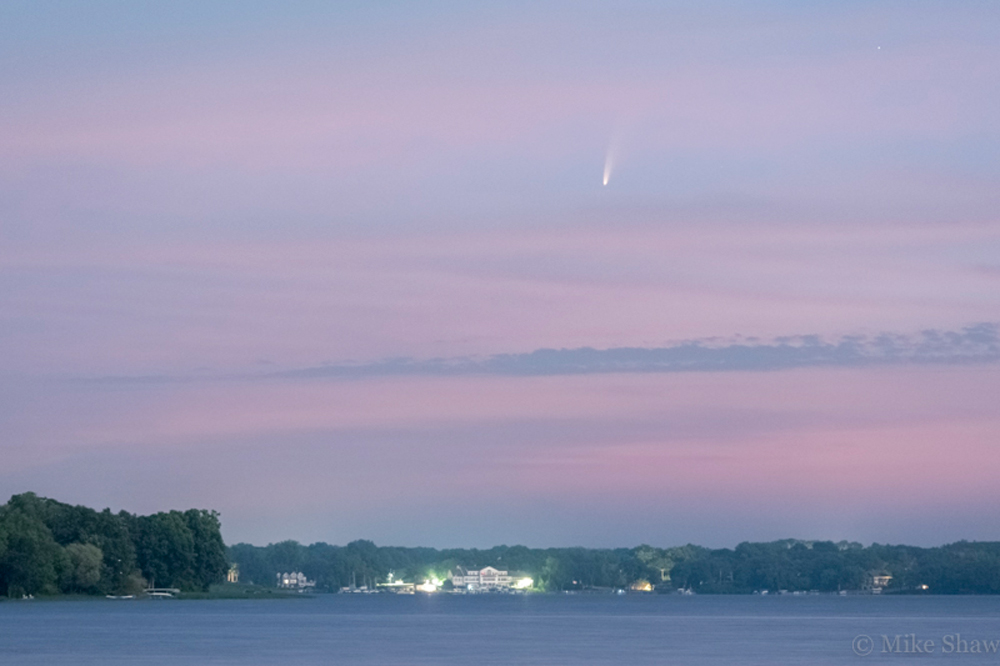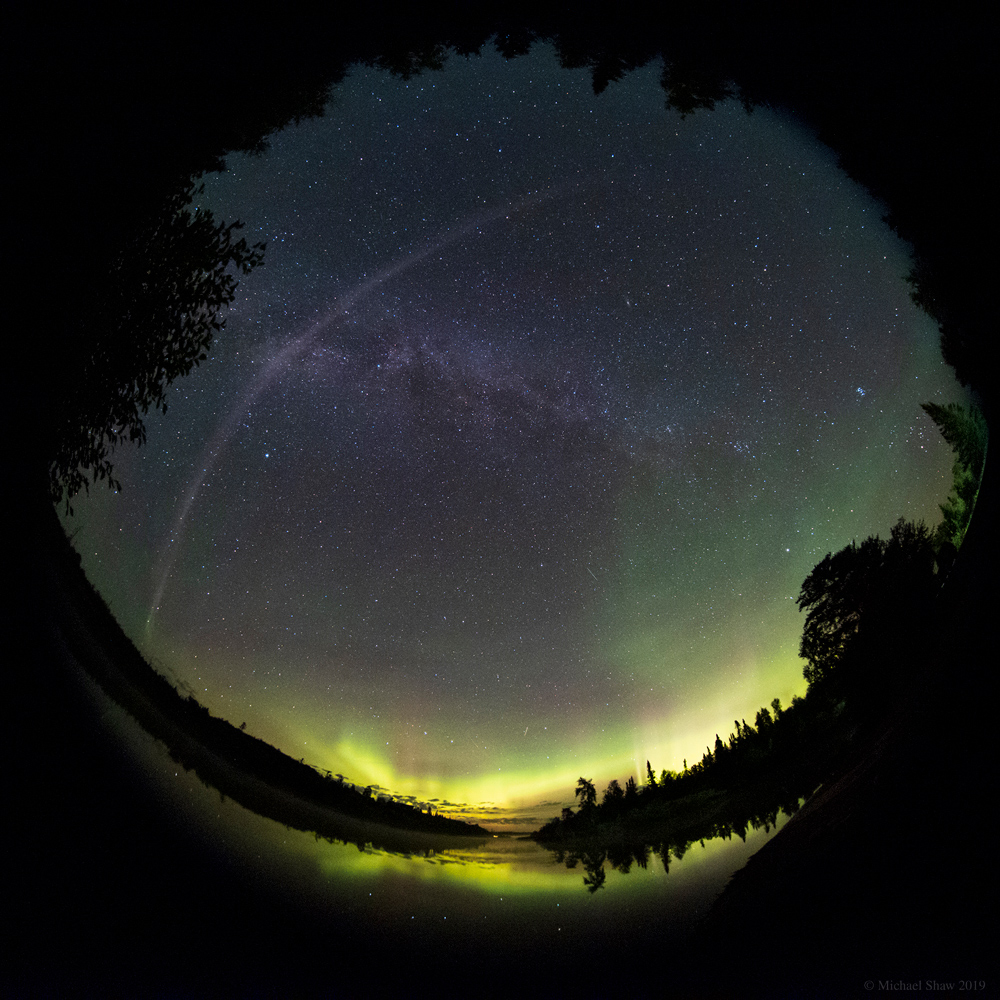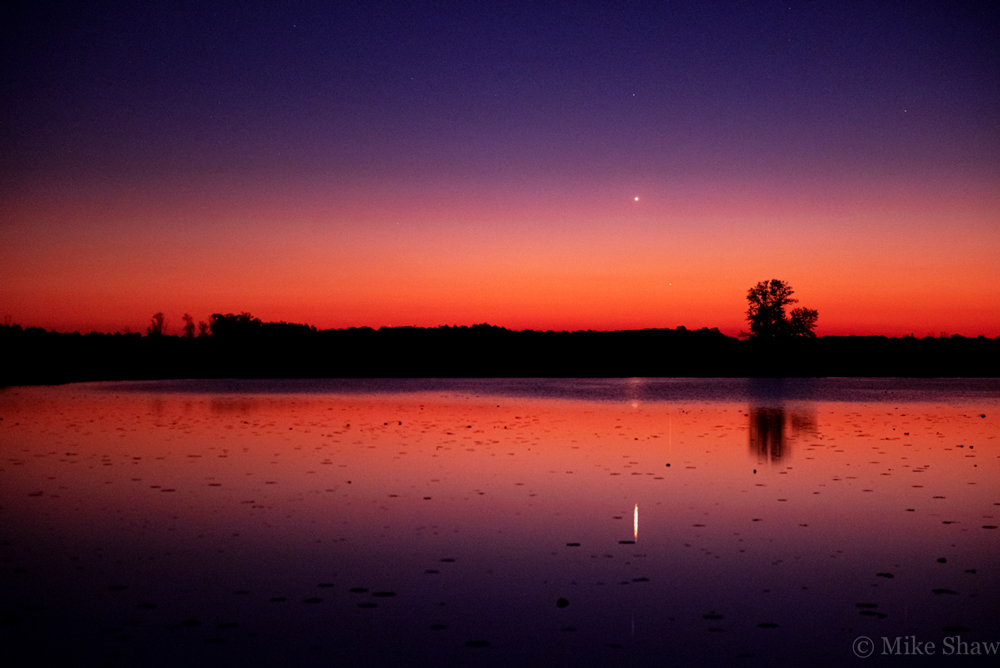
Experiencing Minnesota’s Dark Night Skies
Resident artist is a night photographer and astronomy educator
Published07/10/2020 , by Gretchen Zampogna
Mike Shaw, the Bell Museum’s fourth resident artist of 2019-20, is using his night sky photography to help people experience the night sky at various levels of darkness and light pollution, comparing the same view from sites across Minnesota to show the effect of city lights on our ability to see the stars.
His project will include visiting nine sites across the state to capture shots from each level of darkness on the Bortle scale, and he plans a talk in the Whitney and Elizabeth MacMillan Planetarium to highlight the differences in what we can see from each level of brightness.
Sitting down to talk with Shaw, even over Zoom, it’s easy to feel his enthusiasm for his art and for this project focusing on Minnesota’s night skies.
“I really enjoy sharing my love of nature—especially the night sky—with the general public, because it’s a valuable natural resource that is under threat. It’s like the ocean, a massive depth to explore, and I want to help people explore it,” he says.
Minnesota encompasses the entire range of night sky quality, from Bortle class one in the Boundary Waters Canoe Area Wilderness to Bortle class nine at Minneapolis’ Stone Arch Bridge. Most people—one-third to two-thirds of the population—live in a place where they can’t see the Milky Way from their home.
“I want to help people realize if you’ve never experienced the awe of gazing into three dimensional space, you don’t know what you’re missing,” Shaw says. The stars are still there, of course, but they’re invisible to us. “If you take a cricket chirping and put it in an orchestra, the cricket’s still chirping but you just can’t hear it. The stars get lost in the city lights like that.”

Shaw has challenged himself to create a series of art showing people what’s possible, and perhaps encourage them to limit their light use. At this point in our conversation, he mentions that he’s also a delegate to the International Dark-Sky Association (IDA), which works to protect the night skies for present and future generations.
One initiative of the IDA, he explains, is to education people so they’re aware of the issue of light pollution. Light spreads like high beams in fog, creating light domes, that cover a much larger distance than you’d expect, he says.
The effect of light on humans, nature, mammals, insects—even whole ecosystems—is increasingly well-documented. Around 10 years ago, we transitioned from incandescent lights to LED lights, which exacerbated the problem: The color of incandescent light is less disruptive than the blues of LED light.
Light pollution is also a problem from a commercial point of view because dark skies are a precious resource. Shaw mentions that Cook County in northern Minnesota is one of many places around the country and world making plans to protect their dark skies, since so many tourists appreciate the area’s starry nights.
“As I travel around the state, it’s interesting to see how the sky quality changes. It’s a huge effect. Minnesota has a lot of natural resources, lots of wildlife, but there is a problem: Global light pollution increases 2 percent each year, and we just have a little bit of dark sky left,” Shaw says.
This site offers a great searchable map to see how far you might have to go from your home for a better view of the stars.
At each site he visits, Shaw sets up a tripod and three cameras. He also takes a light measurement. From start to finish, the process takes about an hour, and he has to fit that into the two or three hours of darkness we get in the middle of a summer night—as well as dodge the nights with cloudy skies. Moon phases come into play, too, and he only works on this project during the new Moon, when the sky is darkest.
As he travels the state seeking locations to set up his equipment, it’s important to him that the spots are public access and have a clear view of the horizon. That’s why many of the places are by lakes, where it’s easier to find a flat, unbroken view. Shaw goes to the sites during the day ahead of time, scopes out a spot for the tripod, takes some daytime shots, and makes sure he can get in at night.
The real trick is to capture the different images under very similar night sky conditions. He’s looking for no cloud cover, no Moon, and the stars more or less in the same position. Then he gets photos of the same star groups: the Big Dipper, for example, is one of his subjects for this project.
One of the final outcomes of this work may be an art exhibit in early November. Another piece of work he wants to create is a set of images that can be projected inside the planetarium as he talks the audience through them. “One of my visions is to transition through a series of successive images,” he says, to compare and contrast the same shot taken from sites with varying light conditions.
Besides the Big Dipper, his subjects include the Little Dipper, the Summer Triangle, and the Milky Way.
Shaw also envisions a virtual reality component to his project.
“The thing I’m really excited about is I’m creating a virtual reality series so it’s like you’re standing where I was standing. It’s just striking—there’s one from Split Rock Lighthouse. I want to make a version with things you can click on, like constellations, etc. The idea is that I go through the different colors form the map—here’s what each looks like—and people can look up their area and see what level they’re at, and where they can go to see more.”
To learn more about Mike Shaw’s background, his work, and the books he’s written, take a look at his website. You can also see selected photos and video of the night sky on his Instagram page.


